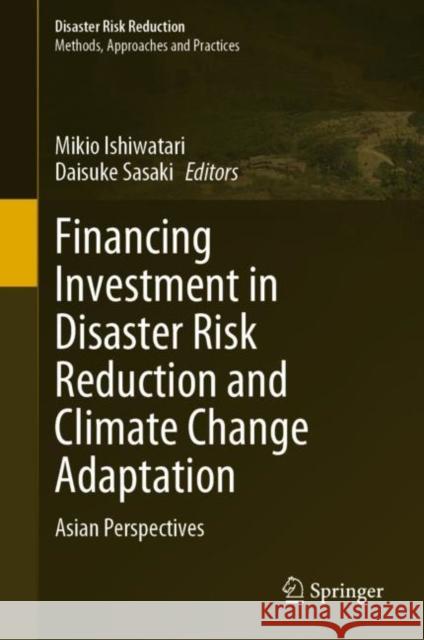Financing Investment in Disaster Risk Reduction and Climate Change Adaptation: Asian Perspectives » książka
topmenu
Financing Investment in Disaster Risk Reduction and Climate Change Adaptation: Asian Perspectives
ISBN-13: 9789811929236 / Angielski / Twarda / 2022
Financing Investment in Disaster Risk Reduction and Climate Change Adaptation: Asian Perspectives
ISBN-13: 9789811929236 / Angielski / Twarda / 2022
cena 484,18
(netto: 461,12 VAT: 5%)
Najniższa cena z 30 dni: 462,63
(netto: 461,12 VAT: 5%)
Najniższa cena z 30 dni: 462,63
Termin realizacji zamówienia:
ok. 22 dni roboczych.
ok. 22 dni roboczych.
Darmowa dostawa!
As the population is growing and urbanization is progressing, higher numbers of people are exposed to disaster risks, especially in the developing countries. Climate change is further worsening the impacts of existing risks and introducing new ones. It is imperative that countries need to invest more in disaster risk reduction (DRR) as well as climate change adaptation (CCA) not only to minimize their impacts but also to build resilience.
To date, various international arenas have recommended increasing investment in DRR. The Sendai Framework for DRR, adopted by the UN member states in 2015 during the Third UN World Conference on DRR, emphasizes investment as a priority for decreasing disaster risks and losses. The Yangon Declaration set the goal of doubling investment to address water-related disasters. However, most countries are not able to proactively invest enough in DRR. Understanding the current scale and estimate of investment and its effects is crucial for promoting DRR investment, but such information and estimates are rarely available.
This book examines the current investment trends and issues in DRR and CCA. Based on specific case studies, field data and evidence, the book identifies challenges in increasing investment and recommends various investment policies and innovative approaches to sustainable progress towards a resilient future.
Chapter 12 is available open access under a Creative Commons Attribution 4.0 International License via link.springer.com.











